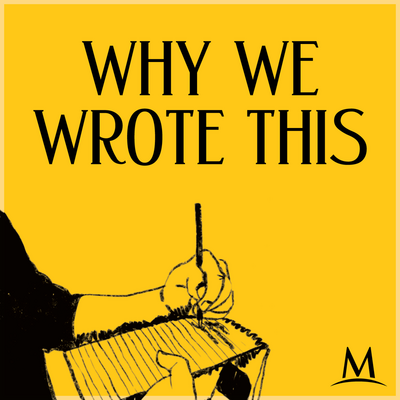How did a reporter’s story evolve from being a report on Saudi Arabia’s economic reorientation to one about that society’s fundamental, bottom-up change? The Monitor’s Taylor Luck speaks with host Samantha Laine Perfas about finding in a notebook the scribbled asides that would actually form the heart of his story.
Why We Wrote This

Who reports the news? People. And at The Christian Science Monitor, we believe that it’s our job to report each story with a sense of shared humanity. Through conversations with our reporters and editors, we explain the qualities behind our reporting that affect how we approach the news. Behind today’s headlines we find respect, resilience, dignity, agency, and hope. “Why We Wrote This” shows how. The Monitor is an award-winning, nonpartisan news organization with bureaus around the globe. Visit CSMonitor.com/whywewrotethis to learn more.
What happened on Jan. 6, 2021, at the U.S. Capitol? The answers are shaded by deeply held perspectives. How can a journalist cover such an event and its fallout without being prejudicial? The Monitor’s Christa Case Bryant speaks with host Samantha Laine Perfas about the sense of fairness that guides her reporting work, and how that helps define the Monitor’s approach.
What does it mean for democracy if the public education system breaks? Host Samantha Laine Perfas and Managing Editor Amelia Newcomb discuss the Monitor’s latest series, which explores public education, democracy, and the future of America.
Title IX is complicated. Reporting on the 50th anniversary of this 37-word law, the Monitor's Kendra Nordin Beato saw the many and varied ways it reshaped US society. In today's episode, she shares how women have pushed for equal treatment with courage and resilience, inspiring generation after generation. Hosted by Samantha Laine Perfas.
For someone with a speech disability, what does it mean to have a voice? In our final episode, we pose the question to two families: one with a husband losing his ability to talk, and another with a disabled son on the cusp of adulthood. Each is looking to technology to help them literally be heard with their own unique voices. At the same time, they remind us that to be human is to be so much more than the sounds we make.
In this episode, we break format to have a conversation about accent, language, and identity with special guest and recurring contributor Katherine Kinzler from the University of Chicago. We talk about the challenges of overcoming bias, share listeners’ experiences (as well as our own), and reflect on the series so far.
Imagine teaching a language you’re still learning. Or raising your kids to speak it when you’re not yet fluent. For communities trying to revive their Indigenous languages, these are daily challenges – and at stake are both the history and future of their culture. In this episode, we meet educators and parents fighting to give their children their ancestral language, Lingít (Tlingit). What does it take to save a language?
Language has power. This was a hard-earned lesson for Vivian Nixon and Elaine Richardson, two women who were told all their lives that their way of talking – talking Black – was something to be kept out of public and professional spaces. This episode follows their separate journeys to embrace the history, beauty, and breadth of Black English, and liberate long-buried parts of themselves in the process.
Legally, you can discriminate against someone because of their accent. Dominic Amegashitsi found this out firsthand when he first came to the U.S. from Ghana to start a new life. This episode follows his journey to communicating more confidently, and examines our assumptions about what it means to communicate well in one of the most important spaces in American life: the workplace.
Diversity in media isn’t just about the way characters look; it’s also about how they sound. The creators of “Molly of Denali” knew that when they started producing the animated kids’ show about the adventures of an Alaska Native girl. We talk to producers about what it takes to meaningfully portray Indigenous peoples on screen. And we meet a family in Fairbanks, Alaska, who share with us what it’s like to finally see their own experiences – and hear their people’s voices – represented in ways that make them proud.



